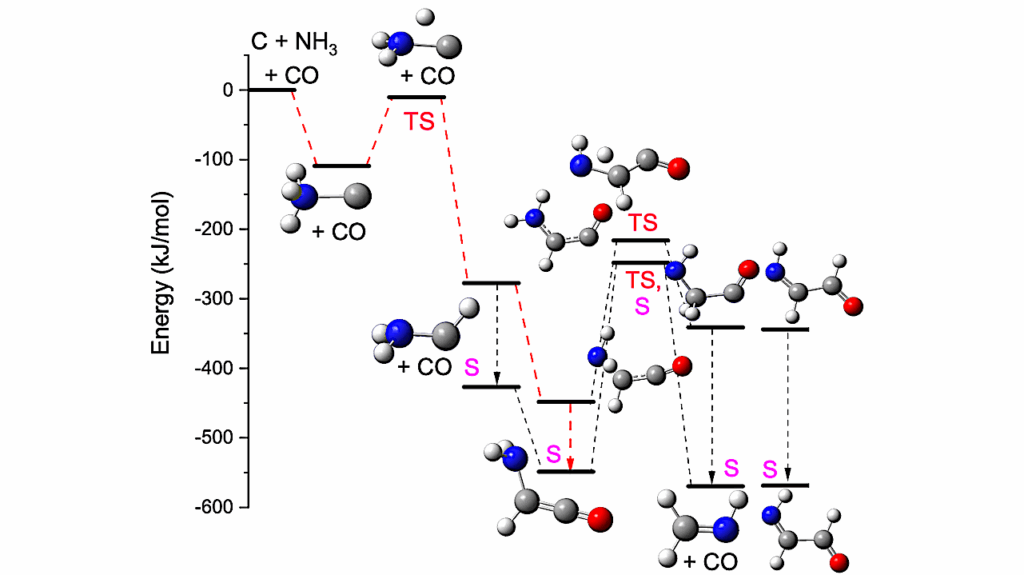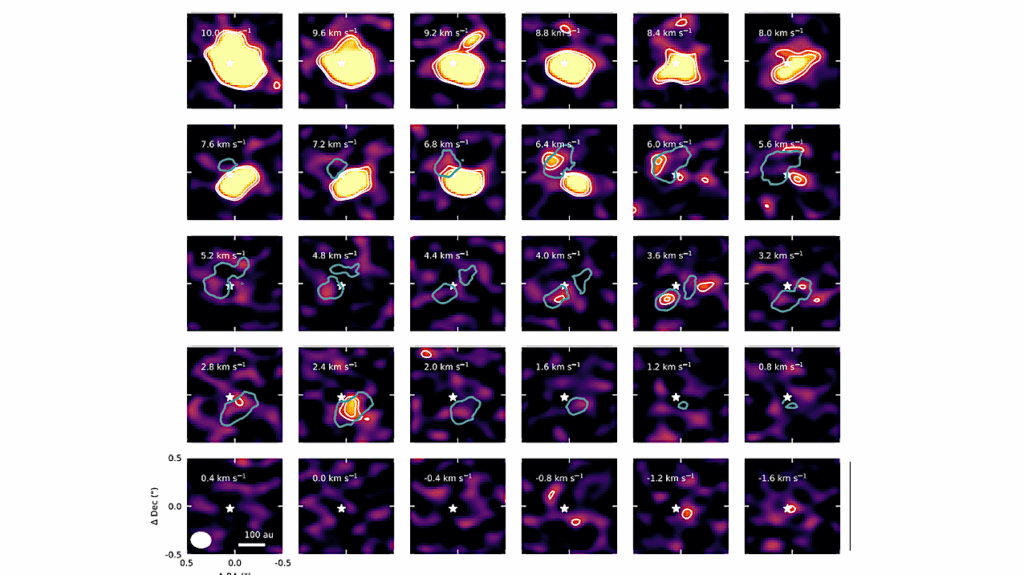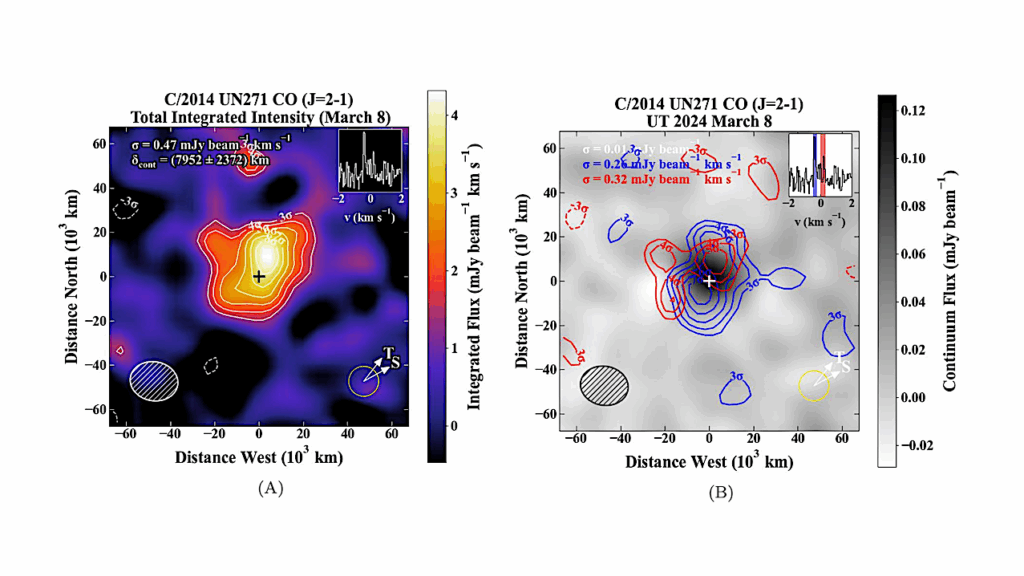Molecules with ALMA at Planet-forming Scales (MAPS). IX. Distribution and Properties of the Large Organic Molecules HC3N, CH3CN, and c-C3H2

The precursors to larger, biologically-relevant molecules are detected throughout interstellar space, but determining the presence and properties of these molecules during planet formation requires observations of protoplanetary disks at high angular resolution and sensitivity
Here we present 0.3” observations of HC3N, CH3CN, and c-C3H2 in five protoplanetary disks observed as part of the Molecules with ALMA at Planet-forming Scales (MAPS) Large Program. We robustly detect all molecules in four of the disks (GM Aur, AS 209, HD 163296 and MWC 480) with tentative detections of c-C3H2 and CH3CN in IM Lup. We observe a range of morphologies — central peaks, single or double rings — with no clear correlation in morphology between molecule nor disk. Emission is generally compact and on scales comparable with the millimetre dust continuum. We perform both disk-integrated and radially-resolved rotational diagram analysis to derive column densities and rotational temperatures. The latter reveals 5-10 times more column density in the inner 50-100 au of the disks when compared with the disk-integrated analysis.
We demonstrate that CH3CN originates from lower relative heights in the disks when compared with HC3N, in some cases directly tracing the disk midplane. Finally, we find good agreement between the ratio of small to large nitriles in the outer disks and comets. Our results indicate that the protoplanetary disks studied here are host to significant reservoirs of large organic molecules, and that this planet- and comet-building material can be chemically similar to that in our own Solar System. This paper is part of the MAPS special issue of the Astrophysical Journal Supplement Series.
John D. Ilee, Catherine Walsh, Alice S. Booth, Yuri Aikawa, Sean M. Andrews, Jaehan Bae, Edwin A. Bergin, Jennifer B. Bergner, Arthur D. Bosman, Gianni Cataldi, L. Ilsedore Cleeves, Ian Czekala, Viviana V. Guzmán, Jane Huang, Charles J. Law, Romane Le Gal, Ryan A. Loomis, François Ménard, Hideko Nomura, Karin I Öberg, Chunhua Qi, Kamber R. Schwarz, Richard Teague, Takashi Tsukagoshi, David J. Wilner, Yoshihide Yamato, Ke Zhang
Comments: 24 pages, 11 figures, 5 tables. Accepted for publication in ApJSS (received 2021 February 15; revised 2021 May 20; accepted 2021 June 9)
Subjects: Earth and Planetary Astrophysics (astro-ph.EP); Astrophysics of Galaxies (astro-ph.GA); Solar and Stellar Astrophysics (astro-ph.SR)
Cite as: arXiv:2109.06319 [astro-ph.EP] (or arXiv:2109.06319v1 [astro-ph.EP] for this version)
Submission history
From: John Ilee
[v1] Mon, 13 Sep 2021 20:56:38 UTC (7,809 KB)
https://arxiv.org/abs/2109.06319
Astrobiology, Astrochemistry,








